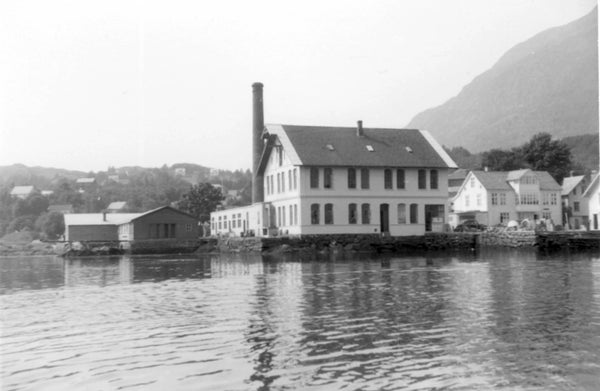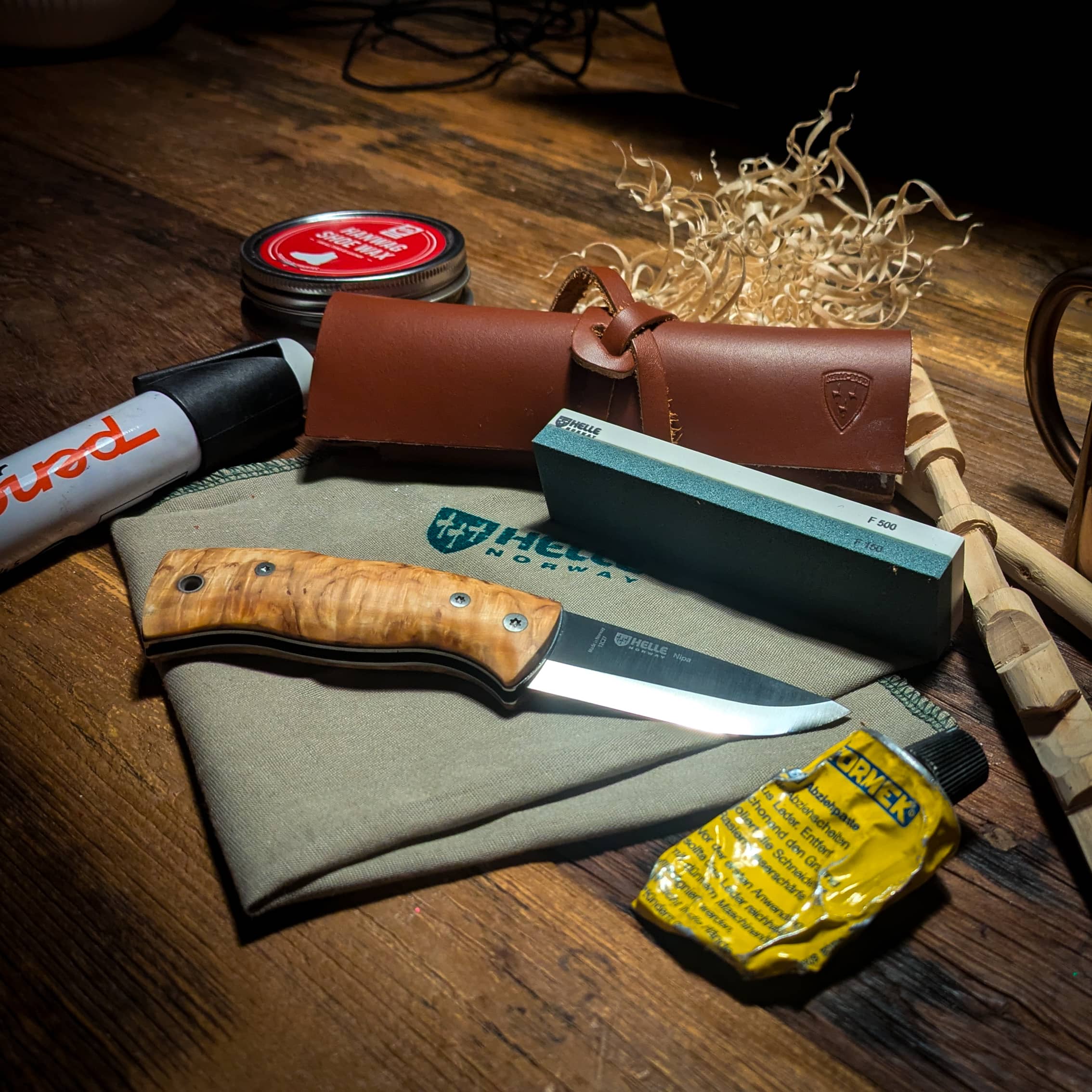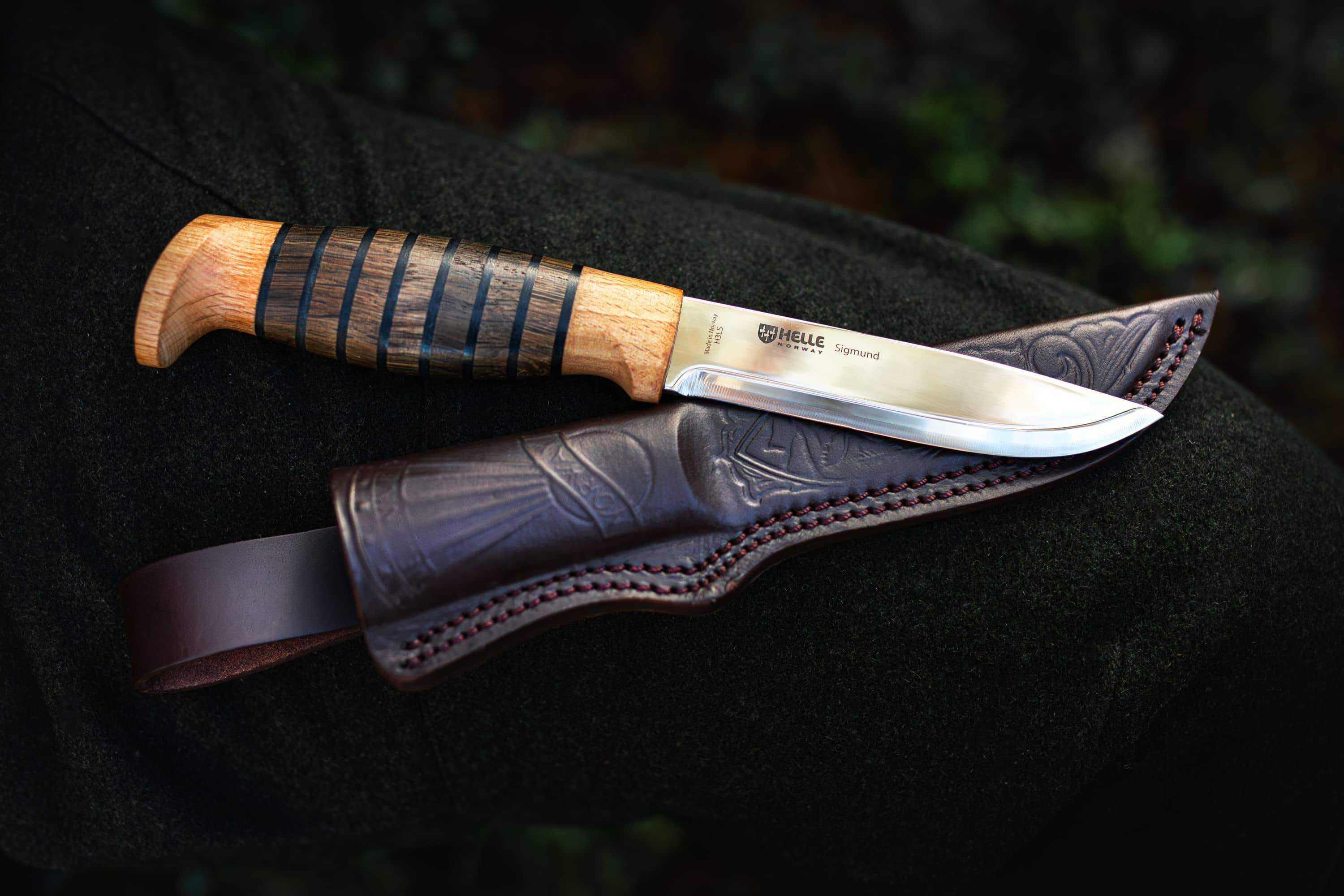Some stories seem almost good to be true. Like the story about the ghost in the knife factory in rural Norway that was built on top of a Viking grave. Except – it is true (at least parts of it). Here is the story about how Helle’s own factory ghost. Here is the story about “the Lady in Black”.
On the 7th of May 1926 something very out of the ordinary happened in the small village of Holmedal on the West Coast of Norway. A group of men were digging to build the foundations of a new pigpen next to the old margarine factory. In the middle of the dig they hit wood – and it looked a lot like a boat. They contacted the “grand old man” of the village – former Parliamentary member Bakke – who used the recently established phone to contact the University of Bergen. They sent their best man for the job – Haakon Shetelig, one of the foremost Viking archaeologists of the time. He was one of the most central members of the excavation of the most famous Viking ship, Osebergskipet, a couple of decades earlier. Shetelig took the first steam both heading to Sunnfjord and arrived a day later.
 Photo from the excavation - Haakon Shetelig / University of Bergen
Photo from the excavation - Haakon Shetelig / University of Bergen
The actual dig was relatively easy according to Shetelig’s notes. The largest problem was that the locals were very curious and investigative – to the point where Shetelig had to wall in the dig site. When the dig was completed, the archaeologist quickly concluded that the boat was from the older part of the Viking age, and that it indeed was a grave. A wood coffin was situated in the middle of the boat, much in the same fashion as on Osebergskipet. Shetelig also concluded that the grave had been robbed in earlier times, as the size of the boat indicated that the person buried must have been a significant figure but there were nevertheless relatively few items found inside the ship. Regardless, the items found clearly indicated that the person buried there had been a woman.
Photo from the excavation - Haakon Shetelig / University of Bergen
Shetelig brought what was possible to move back to the University in Bergen, and the rest of the dig site was covered.
Helle moves house
16 years passed and by this time brothers Sigmund and Steinar had outgrown the forge at the family farm and set their sights on the old margarine factory. Demand and production increased rapidly, and by the late 40s and early 50s they needed even more space. They bought the land to the west of the factory – the plot where the now covered Viking grave was located.

The new building takes shape in the 1950s
The expansion occurred in multiple steps in the 50s, and the brothers filled the new space with modern machinery from overseas. The 50s and 60s were the golden age for another of Helle’s most famous products – their table knives and flatware. This production was heavy in volume, and the workers therefore worked shifts to make sure the big hammer kept hammering out forks, knives and spoons both early and late.
The legend of the “Lady in Black”
Soon after opening the bottom floor of the newest expansion building, workers working the evening shifts started reporting that they heard strange noises in the factory after dark. Factories are always full of sound when they run, but the workers nevertheless felt that there was something decidedly unnatural going on. Rattling in steel where there were no people, objects falling to the floor for no reason, and a specific knocking sound where nothing should knock. Some even reported that they had seen a lady-like shape in a black dress in the sliding around corners in the Western part of the new building – coincidentally right over where the female Viking grave was excavated 40 years earlier.
 The night shift in the first floor
The night shift in the first floor
These rumours started spreading, and most people growing up in Holmedal in this period have heard the legend of the “Lady in Black” that roams the halls of the factory at night. The Helle-brothers themselves said it was all made up and old superstition – but strangely enough neither Sigmund nor Steinar would stay in the first floor of the new building after 10pm…
“The Lady” today
This year marks 90 years since Helle was founded, 80 years since Helle moved into the old factory and 70 years since Helle started expanding the factory westward. – and our very own factory Lady remains more popular than ever. A late summer evening artist Töddel must have paid us a visit and left us a beautiful interpretation of “the Lady in Black” on our factory wall. The lady has also been brought back to life by local youths who this autumn performed a live theatre show in the factory centred around the legend of the lady in black.

Today everyone at Helle has become quite fond of the legend. It has become part of our heritage, and something we are proud of. We have therefore chosen to celebrate the anniversary by making a small number of Viking knives engraved with Töddel’s print in the handle.

… and then to the big question: how real is the legend of the lady in black today? Well, the third generation Helle both originally thought it to be just that – simply a legend. But after some late night grinding knives in the first floor in the new part of the building, Production Manager Jan Steffen is not as certain any more.





